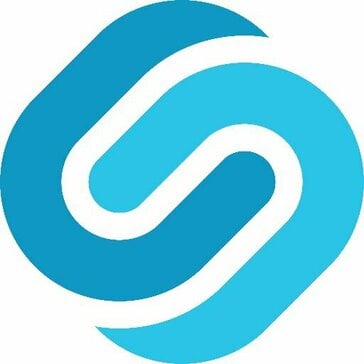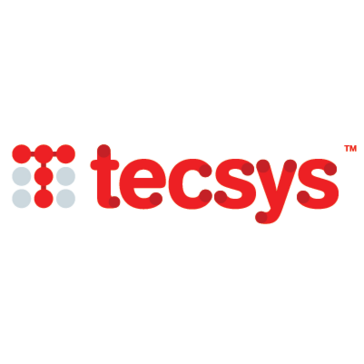No buyer guide found.
Best Supply Chain Management Software
Supply chain management (SCM) software is a cloud-based solution that oversees comprehensive supply chain-related activities like design, planning, execution, manufacturing, sourcing raw materials, and transportation to create a net value and build a competitive infrastructure by producing products and delivering them to end customers. If you are a small business owner who oversees supply chain management activities, there are various supply chain ...
Show MoreSupply chain management (SCM) software is a cloud-based solution that oversees comprehensive supply chain-related activities like design, planning, execution, manufacturing, sourcing raw materials, and transportation to create a net value and build a competitive infrastructure by producing products and delivering them to end customers. If you are a small business owner who oversees supply chain management activities, there are various supply chain management software vendors providing affordable cloud-based software for your business. This software can help increase your efficiency and reduce operating costs without breaking the bank. It doesn't matter if you are a pizza shop owner or a mass manufacturer dealing with thousands of suppliers. Supply chain management software can help you streamline your business. So, if you are looking for a supply chain management system, you are at the right place. Below, we have created a list of the best supply chain management software programs for you. Have a look.
Show LessAll Software
List of Best Supply Chain Management Software

Odoo
All your business on one platform...
Odoo is a comprehensive business management software, offering a wide array of applications to streamline various business operations. Its modular structure allows for customization, catering to specific business needs. Key features include CRM for customer management, eCommerce solutions, accounting tools, inventory management, and project management capabilities. Odoo also supports HR management... Read More
Available
$24.90/month
Belgium

Ramco Logistics
Logistics Management Software for 3PLs ...
Ramco Logistics is a cutting-edge software solution developed to streamline and optimize every aspect of your logistics operations. With its user-friendly interface and powerful features, it simplifies complex tasks like route planning, inventory management, and order tracking. You can easily monitor real-time data, ensuring accurate decision-making and efficient resource allocation. Ramco ... Read More
7 Days
Contact Vendor
India

Logiwa WMS
Warehouse Software Built for High Volume...
Logiwa WMS is a powerful warehouse management software developed to streamline your inventory operations with ease. With its user-friendly interface, Logiwa simplifies complex tasks like order fulfillment, inventory tracking, and warehouse optimization. It offers real-time visibility into your inventory levels, ensuring accurate stock management. The software's intuitive dashboard provides ... Read More
7 Days
Contact Vendor
United States

SafetyChain
Quality & Production Digital Plant ...
SafetyChain is a cutting-edge digital plant management platform, tailored to enhance operational efficiency in the food and beverage industry. It specializes in real-time data capture and analysis, driving improvements in productivity and compliance. The software streamlines critical processes like quality control, safety management, and regulatory compliance. Its robust features include automated... Read More
7 Days
Contact Vendor
United States

NetSuite
Top Business Management Software
Oracle NetSuite is a top-notch cloud-based ERP solution that offers various tools, such as CRM, Human Capital Management, Omnichannel Commerce, Global Business Management, and Accounting Software. The tool provides its services in different industries, like IT Services, Healthcare, Professional Services, Retail, and Wholesale Distribution. Oracle NetSuite offers a unified platform that businesses... Read More
7 Days
Contact Vendor
United States

Acumatica
An intuitive Cloud ERP system to power ...
Acumatica is a modern ERP software designed and developed for versatility and ease. This cloud-based platform streamlines operations for your business with its top-notch features. Acumatica enhances the overall efficiency of your teams by assisting you in covering areas like finance, distribution, and customer management. It offers real-time insights to help you in informed decision-making. The ... Read More
7 Days
Contact Vendor
United States

Procurify
Purchasing and AP Automation Software
Procurify is a user-friendly procurement software developed to simplify purchasing operations for businesses. It offers a centralized platform, allowing organizations to manage and streamline their procurement activities efficiently. With Procurify, users can easily create purchase orders, track spending, and manage supplier relationships. The platform provides real-time visibility into ... Read More
7 Days
$1000/month
France

Precoro
Best Procurement and Business Spend ...
Precoro is a performance-driven procurement software designed to streamline purchasing processes for businesses. It simplifies the entire procurement cycle, from purchase requisition to order approval and delivery tracking. Precoro's intuitive interface allows users to create and manage purchase orders effortlessly, enhancing control over spending. The platform supports collaboration among team ... Read More
7 Days
$490/month
United States

Anaplan
Drive Business Performance With Planning...
Anaplan is a dynamic business planning and performance management platform designed to empower organizations with versatile planning capabilities. It serves as a centralized hub for collaborative planning, allowing teams to create, analyze, and adjust business models in real-time. Anaplan's user-friendly interface facilitates scenario modeling, helping businesses navigate through different ... Read More
7 Days
Contact Vendor
United States

Oracle Fusion Cloud SCM
Cloud supply chain drives resilience and...
Oracle Fusion Cloud SCM is a cutting-edge software that revolutionizes supply chain management. It empowers businesses with a suite of powerful tools, including inventory management, procurement, order fulfillment, and demand forecasting. This software optimizes operations, reduces costs, and enhances customer satisfaction. Its intuitive interface and real-time analytics deliver actionable ... Read More
N/A
Contact Vendor
United States

Netstock
Make better inventory decisions...
Netstock is a cloud-based inventory optimization software designed to cater to small and medium-sized businesses. Its primary strength lies in its powerful forecasting and planning features, enabling businesses to predict stock needs accurately and avoid over or understocking. The software's dashboard provides a clear, real-time view of inventory health, highlighting potential issues like ... Read More
N/A
Contact Vendor
Afghanistan

GMDH Streamline
Take your sales & ops planning to the ...
GMDH Streamline is a cutting-edge inventory management software developed for optimizing supply chain processes. It's particularly renowned for its powerful demand forecasting and planning features. Streamline stands out with its ability to analyze historical sales data, using advanced algorithms to predict future demand accurately. This helps businesses maintain optimal inventory levels, reducing... Read More
Available
Contact Vendor
United States

StockIQ
Improve your inventory efficiency, ...
StockIQ is an advanced inventory management software tailored for businesses looking to optimize their supply chain. Specializing in demand forecasting, replenishment, and supplier management, StockIQ simplifies complex inventory challenges. Its predictive analytics feature forecasts sales trends, helping businesses avoid stockouts or overstock situations. The software also excels in planning ... Read More
N/A
Contact Vendor
Afghanistan

PartnerLinQ
Unified Digital Supply Chain ...
PartnerLinQ is a versatile software developed to enhance supply chain connectivity and collaboration. Its key strength lies in enabling seamless integration between various supply chain partners, ensuring smooth data flow and communication. This software supports a wide range of formats and protocols, making it highly adaptable to different business needs. With its real-time visibility feature, ... Read More
N/A
Contact Vendor
United States

Extensiv 3PL Warehouse Manager
Comprehensive WMS technology that makes ...
Extensiv 3PL Warehouse Manager is a dynamic software solution that revolutionizes third-party logistics operations. With a user-friendly interface, it simplifies the complex world of warehousing and distribution. This software offers robust features like real-time inventory tracking, order fulfillment automation, and multi-client management. The intuitive dashboard empowers you to make data-driven... Read More
N/A
Contact Vendor
United States

Magaya Supply Chain
The all-in-one solution for modern ...
Magaya Supply Chain is a comprehensive software solution tailored for businesses seeking efficient supply chain management. Its standout feature is its ability to seamlessly integrate and automate various aspects of the supply chain, from inventory management and order processing to logistics and documentation. Magaya Supply Chain offers real-time visibility, allowing users to track shipments and ... Read More
N/A
Contact Vendor
United States

Zoho Inventory
Online Inventory Management Software
Zoho Inventory is an intuitive cloud-based inventory management software that is suitable for small to medium-sized businesses. Its standout feature is seamless integration with various e-commerce platforms, enabling effortless multi-channel sales management. The software excels in automating order fulfillment processes, including purchase order creation and tracking of shipments, significantly ... Read More
N/A
Contact Vendor
United States

Anvyl
Gain visibility into your supply chain...
Anvyl is a cutting-edge supply chain management software developed to revolutionize your production and procurement processes. With its user-friendly interface, Anvyl makes it effortless to monitor and manage every aspect of your supply chain. It offers real-time visibility into your supplier relationships, ensuring transparency and accountability. The software's intuitive dashboard provides ... Read More
7 Days
Contact Vendor
United States

Blue Yonder Supply Planning
Supply chain planning software that ...
Blue Yonder Supply Planning is a powerful software that helps businesses efficiently manage their supply chain operations. It uses advanced algorithms and real-time data to forecast demand, optimize inventory levels, and streamline production schedules. This means companies can reduce excess stock, lower carrying costs, and improve customer service by ensuring products are available when needed. ... Read More
7 Days
Contact Vendor
United States

Logility
AI-based Supply Chain Planning Solutions
Logility is a versatile software developed to supercharge your supply chain management. It uses cutting-edge technology and data analytics to help businesses predict demand accurately, optimize inventory, and enhance overall efficiency. With Logility, you can reduce excess stock, lower costs, and meet customer demands with ease. Its user-friendly interface makes it simple to collaborate and make ... Read More
7 Days
Contact Vendor
United States

FreightPOP
Transportation management system for ...
FreightPOP is a powerful software solution developed to simplify and streamline the complexities of managing freight and logistics operations for businesses of all sizes. With its user-friendly interface, FreightPOP offers real-time visibility into shipments, allowing users to track their goods from pickup to delivery. It supports integration with popular carriers to automate shipping processes ... Read More
7 Days
Contact Vendor
United States

Tecsys Elite
A digitally enabled, integrated platform...
Tecsys Elite is a user-friendly software solution developed to streamline and enhance supply chain management for businesses. Its primary goal is to ensure that products move seamlessly from production to customers in a smooth and timely manner. With Tecsys Elite, organizations can effortlessly monitor their inventory, keep tabs on orders, and track shipments. Furthermore, the software assists in ... Read More
N/A
Contact Vendor
United States

GoRamp
Digital and Simple Supply Chain ...
GoRamp is a top-notch supply chain management software developed to elevate your transportation operations to new heights. Its user-friendly interface simplifies complex logistics tasks, offering a one-stop solution for efficient freight management. With GoRamp, you can effortlessly plan, execute, and optimize your shipments, ensuring on-time deliveries and cost savings. The platform provides real... Read More
7 Days
Contact Vendor
United States

Neurored TMS & SCM Software
TMS & SCM On The Salesforce Platform
Neurored TMS & SCM Software is a future-ready solution for businesses looking to optimize their transportation and supply chain management. With its user-friendly interface, it simplifies complex logistics tasks, offering a comprehensive platform to streamline your operations. This software offers real-time visibility into your supply chain, allowing you to track shipments, manage orders, and make... Read More
14 Days
$100/month
Spain

Solvoyo
End-To-End Supply Chain Decision ...
Solvoyo is a powerful supply chain optimization platform developed to transform the way you manage your business operations. With its intuitive interface, it simplifies complex supply chain challenges, offering a comprehensive solution to boost efficiency. Solvoyo provides real-time visibility into your supply chain, enabling data-driven decision-making and demand forecasting accuracy. Its ... Read More
7 Days
Contact Vendor
United States